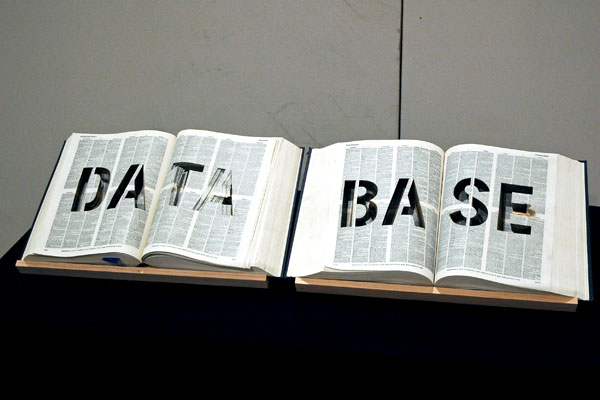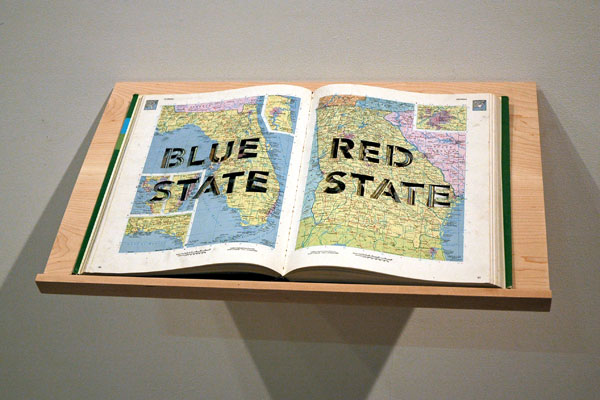


(look closely at the borders within the drawing above)
NOTE: Yesterday I wrote a hurried and perfunctory post on the work Michael Mandiberg has produced while he has been associated with Eyebeam, because I had been told he would have an open studio last night. The information proved to be mistaken; the date of the formal viewing is instead going to be next Tuesday, January 27, at Eyebeam, from 2 to 4, or by appointment [michael at mandiberg dot com] through the end of that week, until January 30.
Mandiberg has assembled a body of work in a range of various mostly-paper forms using elements of both the old technology and the new. He's addressing the rapidly accelerating obsolescence of our established information systems; our experience of history and language; what we do with time; our direct participation in changing social structures and the disappearance of old political certainties; and old art subsumed in the new. He does it sometimes with ordinary words, and sometimes with the line of the artist. His tool in expressing both of these languages is the modern laser cutter.
His sitter may be the OED, the New York Times, the World Book, the National Geographic Society or Josef Albers. For these portraits he has cut through variously somewhere between one and several hundred pages of "dated" printed texts to produce dramatic, even ravishing negative spaces, words, which symbolize or articulate the contemporary, cutting-edge approach to words and information, and he carefully scorches surfaces of the artist's traditional paper medium to reconfigure for today some of the aesthetic icons and arguments of the past.
As modern as they are, these pieces are hardly accomplished just by push button. The mark of the artist's hand is in each. I don't know how much of it is a consequence of the process and the nature of the materials and how much of it comes from Mandiberg trying calculatedly to show imperfections; he may not know the answer himself.
Sometimes the machine itself fails to produce a perfect effect, and the artist has gone back to reproduce its desired machine perfection by hand. Sometimes Mandiberg seems to be trying to get rid of imperfections in the machine's work (to remove the hand), and elsewhere he is trying to make the work of the machine look slightly imperfect (to introduce the hand).
If it is anything like what I describe, this approach registers on this individual, personal scale the complex relationship with our machines which we have all shared - not just the artists among us - since the beginnings of industrialization.
I don't have the space to describe the individual work displayed, especially because they are all so conceptual, and because much of the work is still incomplete, but if you visit far West 21st Street during the next week, you'll find the artist is totally up to that task.
Mandiberg is currently a senior fellow in Eyebeam's R&D OpenLab facility. In a conversation Barry and I had with him there yesterday, we were discussing his art and his process when he avowed that, yes, "all of the work here lives in both the arts sphere and the nerd sphere". Yum. Members of both communities will find much to their tastes if they are able to check out his installation.
[final image from the artist's Flickr set]